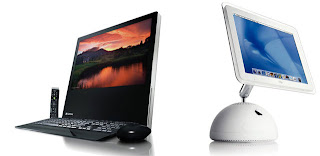Google CEO Unveils Google Health Initiative
Thursday, February 28, 2008
Marissa Mayer, Google's vice president of products, blogged a bit about t
 he initiative on the official company blog this morning, suggesting the tool will empower users "to collect, store, and manage their own medical records online."
he initiative on the official company blog this morning, suggesting the tool will empower users "to collect, store, and manage their own medical records online."Privacy experts repeatedly warn that online medical records (or PHR, for personal health records) are a bad idea because any sort of security breach could be obscenely harmful to consumers. Still, one analyst we spoke with thinks it's only a matter of time before people voluntarily give up their most sensitive medical information in exchange for the convenience of using the online service or for personalized care.
"We all had these privacy concerns years ago when it came to online banking, but what happened was this: People found it so convenient that they were willing to give up their privacy in exchange for the service," says Andrew Rocklin, principal of Diamond Management & Technology Consultants in Chicago.
You could, for example, argue that users of web-based weight loss services give up some of their most personal and embarrassing information in order to receive customized or personalized dietary care. Rocklin also makes the point that most people give up all kinds of personal information using their local grocery store scan cards.
"Think of all the personal information people give up," Rocklin says. "[Grocery stores] know your Zip code, they know about your kids, your pets, and maybe even your method of birth control. We give all that information away so we can save a little money on a quart of yogurt."




















 Let's not forget the original underpowered, overpriced all-in-one work of art, the 20th Anniversary Mac. Repeat after me: function follows form.
Let's not forget the original underpowered, overpriced all-in-one work of art, the 20th Anniversary Mac. Repeat after me: function follows form.













 A systray and start folder filled with garbage.
A systray and start folder filled with garbage.




